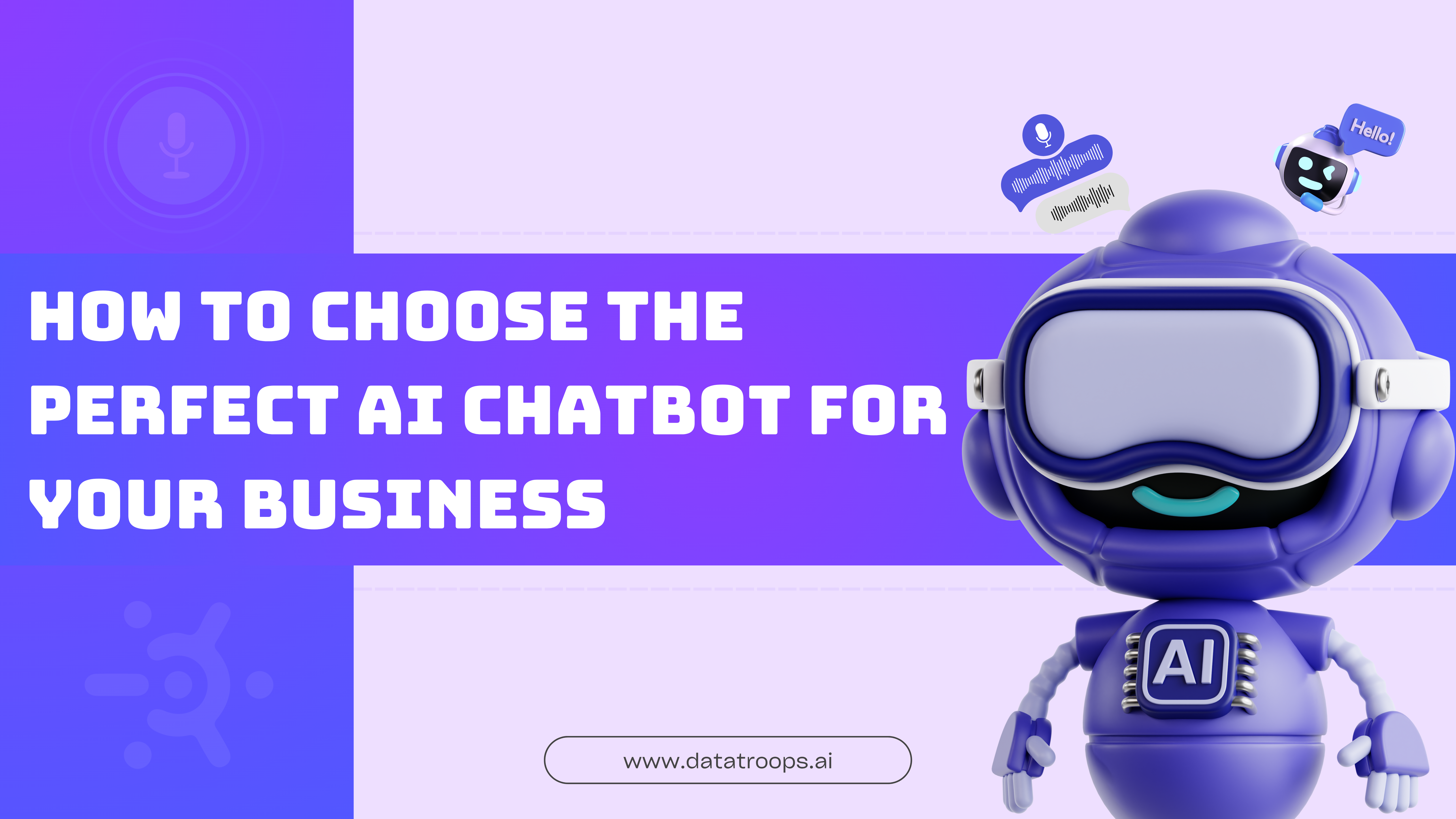How To Choose The Perfect AI Chatbot For Your Business
In the age of digital transformation, AI chatbots are no longer a luxury — they’re a competitive necessity. Whether you're running a startup, an e-commerce store, or a large enterprise, AI chatbots can revolutionize customer service, automate sales, and enhance operational efficiency. But with hundreds of options in the market, how do you choose the perfect AI chatbot for your business? In this blog, we’ll walk you through the essential criteria, use cases, and actionable steps to help you find the AI chatbot that aligns perfectly with your business goals.
Why AI Chatbots Are Game-Changers
Discover AI Chatbot Solutions
Looking to integrate an AI-powered chatbot into your business? Explore our cutting-edge chatbot technology designed to optimize your customer interactions.
Before diving into the selection process, let’s quickly understand why AI chatbots matter:
- 24/7 Customer Support: Never miss a customer query again.
- Instant Response Time: Boost engagement by eliminating wait times.
- Cost-Effective: Reduce the need for large customer service teams.
- Data-Driven Insights: Learn about user behavior in real-time.
- Scalability: Easily handle thousands of interactions at once.
1. Define Your Use Case
The first step to choosing an AI chatbot is understanding your business needs. Ask yourself:
- Do you want to offer customer support or handle sales inquiries?
- Will the chatbot be used on your website, mobile app, or social media?
- Are you looking for lead generation, feedback collection, or internal automation?
Examples:
- For e-commerce: Cart recovery, product recommendations, order tracking.
- For SaaS: Onboarding, FAQ automation, subscription management.
- For service-based businesses: Appointment scheduling, consultation booking.
2. Look for Natural Language Processing (NLP) Capabilities
At the core of a great AI chatbot lies its NLP engine — the technology that understands and processes human language.
- Multilingual support
- Contextual understanding
- Sentiment analysis
- Intent recognition
Modern NLP models like OpenAI’s GPT, Google’s Dialogflow, or Rasa NLU offer highly accurate and dynamic conversational experiences.
If your chatbot fails to understand slang, typos, or complex queries — users will leave.
3. Prioritize Integration with Your Existing Tools
Your chatbot shouldn’t exist in a silo. Look for a chatbot platform that can integrate easily with your CRM (e.g., HubSpot, Salesforce), email marketing tools (e.g., Mailchimp), and support systems (e.g., Zendesk, Freshdesk).
- Payment gateways (Stripe, Razorpay)
- Google Calendar for appointment scheduling
- Shopify or WooCommerce (for e-commerce businesses)
The more integrations, the more your chatbot becomes a central part of your automation stack.
4. Choose Between Rule-Based vs. AI-Powered Chatbots
| Type | Description | Best For |
|---|---|---|
| Rule-Based | Works on predefined flows and keywords | Simple FAQs, onboarding |
| AI-Powered | Learns and adapts based on user input | Complex queries, dynamic conversations |
- A restaurant might only need a rule-based bot for bookings.
- A fintech startup would benefit more from an AI chatbot that handles support tickets or guides users through onboarding flows.
5. Evaluate the Bot’s Learning and Training Features
- Easy-to-update intents and entities
- Ability to import historical chat data
- Learning from failed interactions
- Dashboard to track common queries
A good AI chatbot should get smarter with every conversation.
6. Ensure Multi-Channel Deployment
- Your website
- Facebook Messenger
- Slack or Microsoft Teams
Choose a chatbot platform that supports omnichannel presence to maintain consistency across all touchpoints.
7. Check Scalability and Security
- How many conversations the platform can handle concurrently
- Uptime guarantees (SLA)
- GDPR, CCPA, and HIPAA compliance
- Role-based access controls
8. Compare Pricing Models
- Per chat/session
- Per user
- Monthly subscription
- Enterprise/custom quotes
Avoid platforms with hidden costs. Check for:
- Free trials or freemium models
- Chat history limits
- Additional charges for integrations or APIs
9. Read Reviews & Test Demos
- Request a live demo
- Try a free version or trial
- Read real customer reviews on sites like G2, Capterra, or Trustpilot
🙌 Choose platforms with responsive support and strong documentation.
Final Thoughts
The perfect AI chatbot isn’t the most expensive or the most popular — it’s the one that fits your business needs, scales with you, and improves your customer experience.
Start small, test thoroughly, and invest in a chatbot that aligns with your long-term vision.
💡 Still unsure? At DataTroops.ai, we help businesses implement AI chatbots tailored to their exact needs.
Book a free consultationFAQs
Explore Our Technologies
Dive deep into the technologies that power our innovative solutions. Learn more about the tech stack we use to drive results.
1. How long does it take to implement an AI chatbot?
Usually between a few hours to a few weeks, depending on complexity.
2. Can AI chatbots replace human agents completely?
No. The best approach is a hybrid — use AI for repetitive tasks, and human agents for complex queries.
3. Do I need coding skills to set up a chatbot?
Not necessarily. Many platforms offer drag-and-drop builders with zero-code options.
